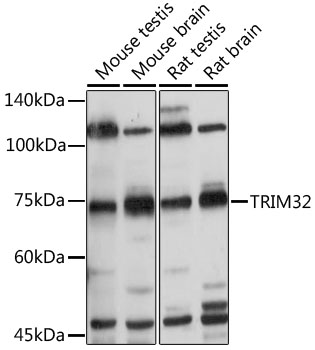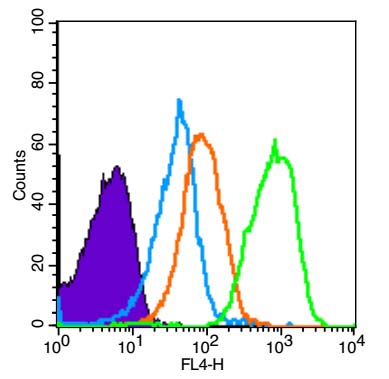TRIM32 antibody
GTX113937
ApplicationsImmunoFluorescence, Western Blot, ImmunoCytoChemistry, ImmunoHistoChemistry, ImmunoHistoChemistry Paraffin
Product group Antibodies
TargetTRIM32
Overview
- SupplierGeneTex
- Product NameTRIM32 antibody
- Delivery Days Customer9
- Application Supplier NoteWB: 1:500-1:20000. ICC/IF: 1:100-1:1000. IHC-P: 1:100-1:1000. *Optimal dilutions/concentrations should be determined by the researcher.Not tested in other applications.
- ApplicationsImmunoFluorescence, Western Blot, ImmunoCytoChemistry, ImmunoHistoChemistry, ImmunoHistoChemistry Paraffin
- CertificationResearch Use Only
- ClonalityPolyclonal
- Concentration1 mg/ml
- ConjugateUnconjugated
- Gene ID22954
- Target nameTRIM32
- Target descriptiontripartite motif containing 32
- Target synonymsBBS11, HT2A, LGMD2H, LGMDR8, TATIP, E3 ubiquitin-protein ligase TRIM32, 72 kDa Tat-interacting protein, RING-type E3 ubiquitin transferase TRIM32, TAT-interactive protein, 72-KD, tripartite motif-containing protein 32, zinc-finger protein HT2A
- HostRabbit
- IsotypeIgG
- Protein IDQ13049
- Protein NameE3 ubiquitin-protein ligase TRIM32
- Scientific DescriptionThe protein encoded by this gene is a member of the tripartite motif (TRIM) family. The TRIM motif includes three zinc-binding domains, a RING, a B-box type 1 and a B-box type 2, and a coiled-coil region. The protein localizes to cytoplasmic bodies. The protein has also been localized to the nucleus, where it interacts with the activation domain of the HIV-1 Tat protein. The Tat protein activates transcription of HIV-1 genes. [provided by RefSeq]
- Storage Instruction-20°C or -80°C,2°C to 8°C
- UNSPSC12352203
References
- Prajapati P, Gohel D, Shinde A, et al. TRIM32 regulates mitochondrial mediated ROS levels and sensitizes the oxidative stress induced cell death. Cell Signal. 2020,76:109777. doi: 10.1016/j.cellsig.2020.109777Read this paper
- Wang M, Luo W, Zhang Y, et al. Trim32 suppresses cerebellar development and tumorigenesis by degrading Gli1/sonic hedgehog signaling. Cell Death Differ. 2020,27(4):1286-1299. doi: 10.1038/s41418-019-0415-5Read this paper






